More than a dish, it is a convivial ritual where everyone shares and consumes the meal, in a manner similar to fondue (in Piedmontese dialect, diàn or fojòt).
Traditionally, it is a typical harvest dish, usually consumed during autumn and winter. One of the legends on its origins has it that it was prepared to award harvesters for their hard work.
INGREDIENTS
for 4 people
- 250 gr of anchovies preserved in salt
- 100 gr butter
- 300 gr oil
- 20 cloves of garlic
- Milk
- Cardoons (those known as “Hunchback” cardoons)
- Turnips
- Peppers
PREPARATION
Clean the anchovies with a sheet of kitchen paper (do not wash them) and de-bone. Slice the garlic into thin slices, place in a small saucepan with milk and cook for 20 minutes: this will make your dish easier to digest. Place in the “fuoit” (terracotta saucepan used only for bagna cauda) the garlic, previously drained from the milk, oil and anchovies. Mix for 20 minutes until a cream is formed. Add the butter and continue mixing for another few minutes.
The dish should be served hot (make sure it does not come to a full boil over the heat source); the vegetable pieces of cardoons, turnips, and peppers are dipped in the sauce and then eaten.
Some people say other vegetables such as beets, savoy cabbage, Jerusalem artichokes or celery could be added to this recipe, but I think this makes it banal.*
The final touch: when there is just a little bagna left, crack a whole egg into the mixture and heat for a minute or so.
Serve with Barbera d’Asti and a chunk of crusty bread.
*note from the author Roberto De Silva.
Related articles
Kidney, originally a poor man’s meal reflecting peasant cuisine, has over time become a food appreciated by chefs and is today a protagonist in the most refined Italian cuisine.
Baked stuffed peaches is a fresh and simple recipe that is perfect for serving during the summer months.







